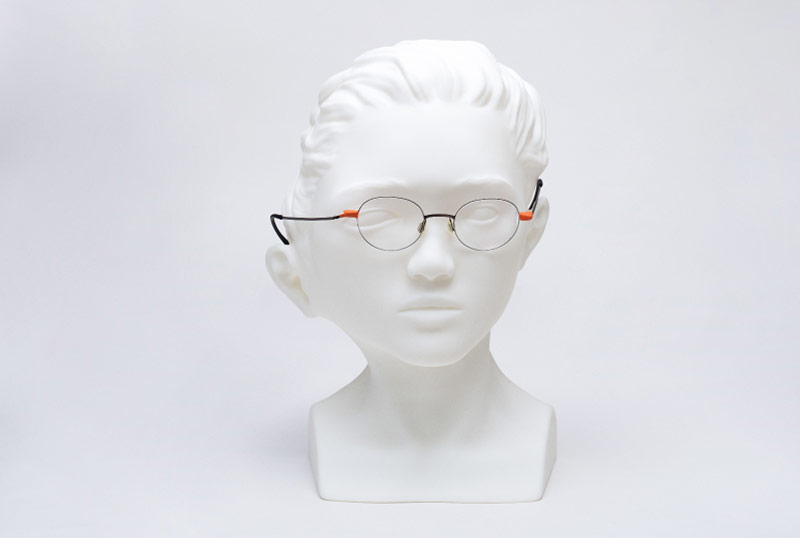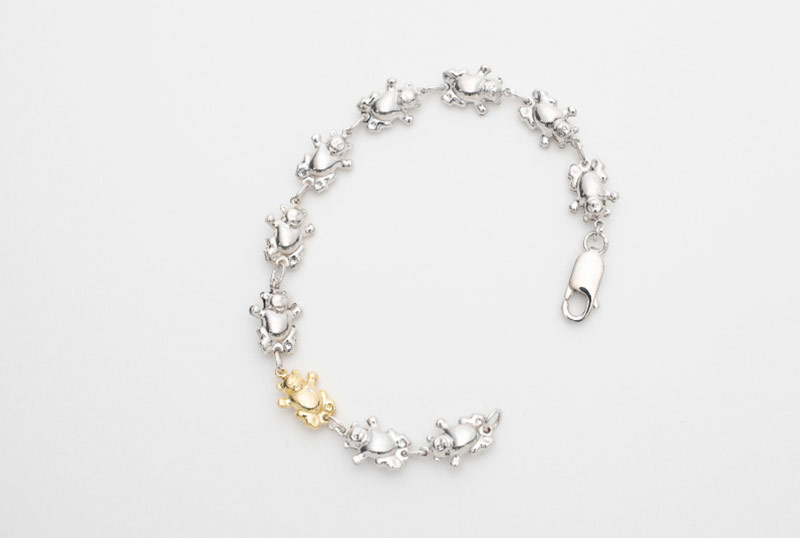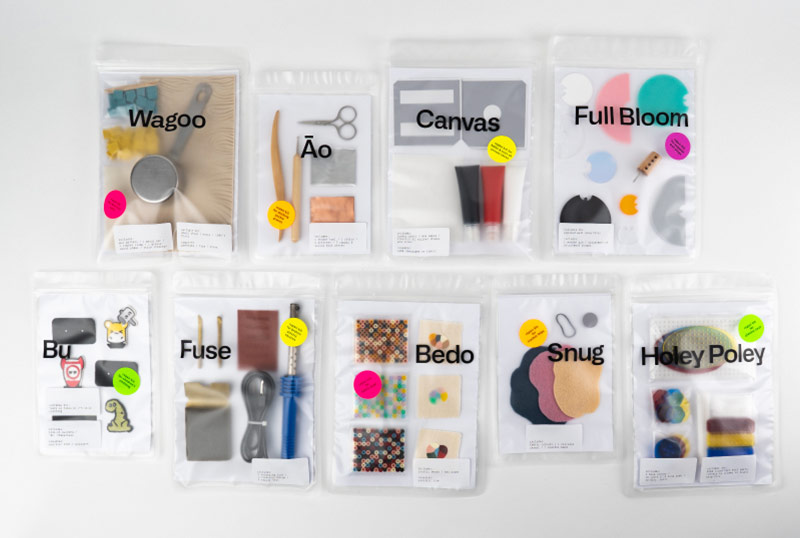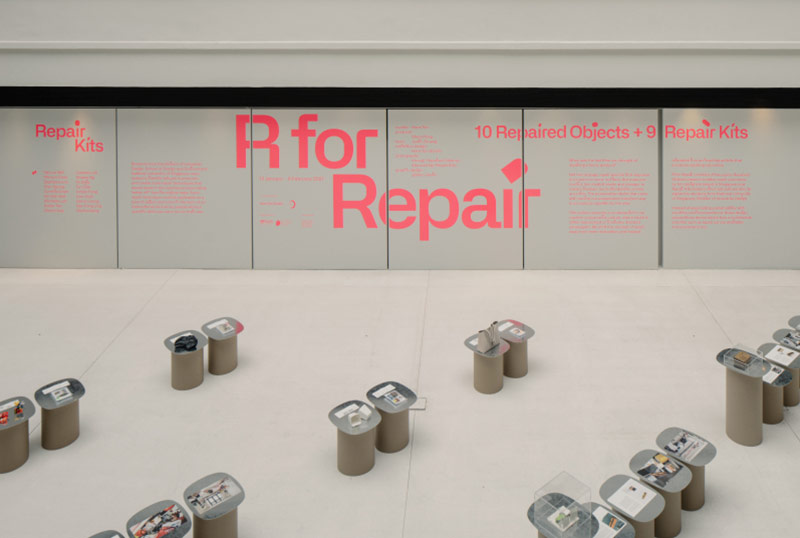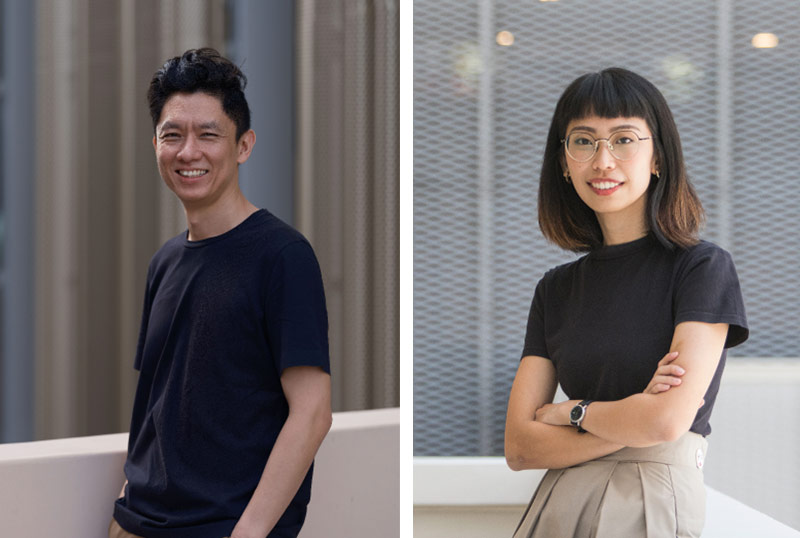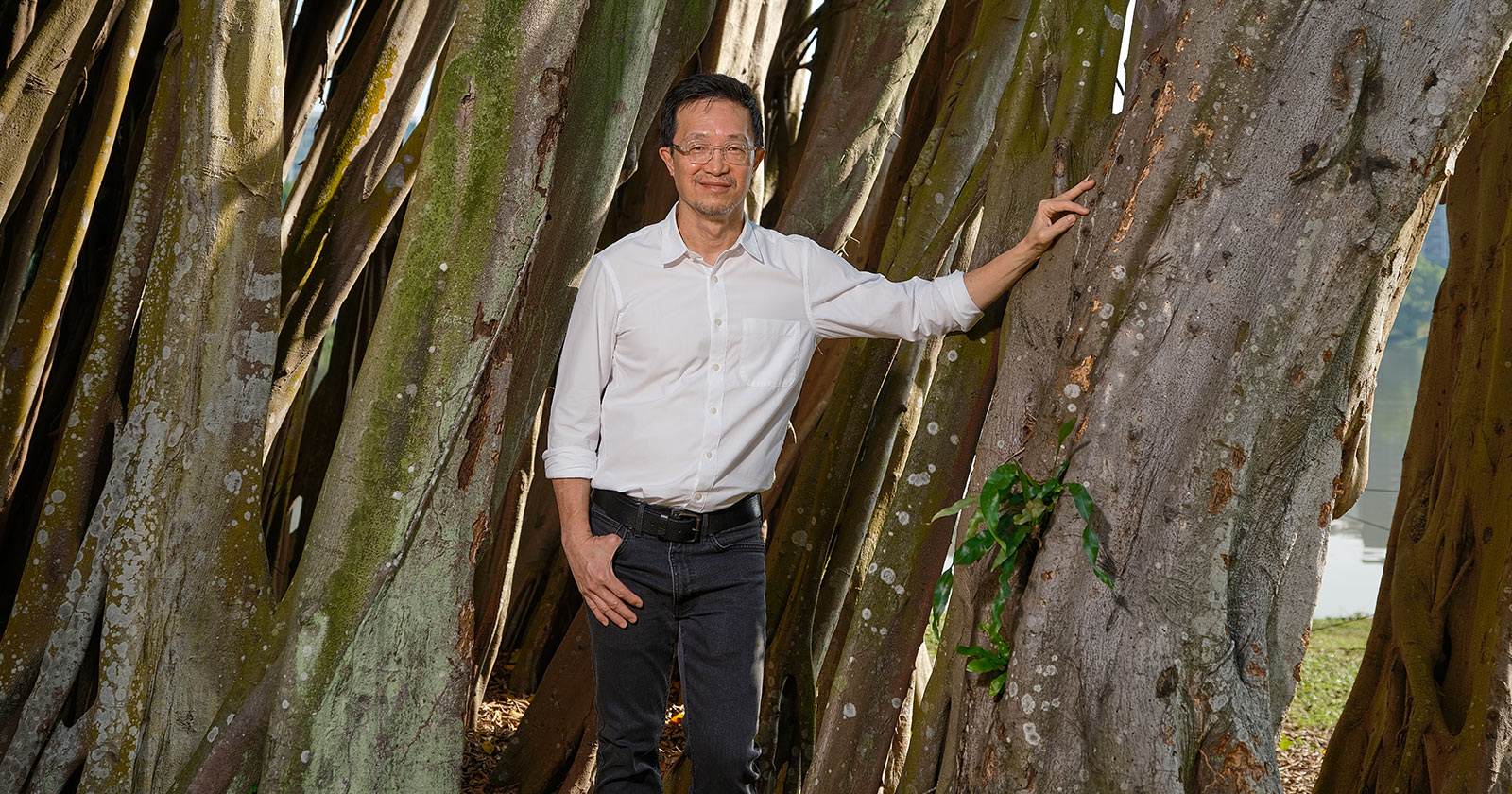DESIGN OF THE YEAR 2023
R for Repair
Designer
Hans Tan Studio
CONTACT
[email protected]
A pair of movie tickets that are fading, but not forgotten. They are encased in a transparent slab and an augmented reality filter brings to life their original state. For the couple that held them on their first date, the tickets live on as a treasured memento. This object is just one example of those revived by R for Repair, a curatorial project that seeks to redesign the banal act of repairing into an inspiring and creative endeavour.
In response to two separate briefs designed by Hans Tan Studio, professional designers and design students were asked to create their own interpretation of repair and repair processes respectively. The results are 10 repaired objects and nine repair kits that go beyond simply restoring function. Broken items were returned to their owners enhanced, personalised, and even reimagined into outcomes better than the originals. Each embodies a designer’s unique take on what repair is, as well as the stories of the owner’s relationship with the object.
Presented together in an exhibition, the wide range of repaired objects and repair kits presented a counterpoint to today’s consumerist culture where goods are easily thrown away and replaced. Their beautiful and delightful outcomes also showed how sustainability is not just about using less and acting more responsibly, which can seem burdensome to some. It can be desirable and purposeful too.
About the Designer
Hans Tan is a designer-maker, curator, and Associate Professor at the National University of Singapore. At his eponymous studio, Tan makes use of beauty and utility as a pretext for visual discourse, tiptoeing on the boundaries between design, craft, and art. His work maintains a keen focus on disrupting common things, materials, and fabrication processes, embedding narratives that poke at collective memory and comment on design and its industry as a phenomenon, especially in the context of heritage, consumption, and waste.
As a curator, Tan employs design as a creative and generative catalyst to address cultural and societal challenges or to turn up difficult topics, where the presentation of new possibilities challenges preconceptions and tickles our imagination.
Sheryl Teng was the assistant curator and project manager for R for Repair. With a background in industrial design and fashion textiles, she dwells in the wonders of materiality and tactile experimentation. As a meticulous designer-maker, her works negotiate and explore relationships between materials, people, and objects, creating surprises through ordinary, quotidian phenomena.
EXHIBITION DESIGNER
Hans Tan Studio
COPY EDITOR
In Plain Words
REPAIR DESIGNERS
State Property
Atelier HOKO
Clement Zheng
Lanzavecchia + Wai
Mighty Jaxx
Lim Qi Xuan
Kinetic
Studio Juju
Tiffany Loy
Jonathan Yuen
CLIENT
DesignSingapore Council
EXHIBITION GRAPHICS
gideon-jamie
PHOTOGRAPHERS
KHOOGJ
Iceberg7
Students from the Division of Industrial Design, College of Design and Engineering, National University of Singapore
Ng Luo Wei
Mervyn Chen
Michelle Loh
Xavier Teo
Lew Jinjie
Darryl Leong
Zephanie Lim
Xiao Jieying
Cynthia Chan
Tan Kah Kiat
Sen Fong Ling
Shaina Kang
Tan Zijie
Jonjoe Fong
Shawn Ng
Ye Jiajie
Sheryl Ang
Celeste Loh
EXHIBITION DESIGNER
Hans Tan Studio
COPY EDITOR
In Plain Words
REPAIR DESIGNERS
State Property
Atelier HOKO
Clement Zheng
Lanzavecchia + Wai
Mighty Jaxx
Lim Qi Xuan
Kinetic
Studio Juju
Tiffany Loy
Jonathan Yuen
CLIENT
DesignSingapore Council
EXHIBITION GRAPHICS
gideon-jamie
PHOTOGRAPHERS
KHOOGJ
Iceberg7
Students from the Division of Industrial Design, College of Design and Engineering, National University of Singapore
Ng Luo Wei
Mervyn Chen
Michelle Loh
Xavier Teo
Lew Jinjie
Darryl Leong
Zephanie Lim
Xiao Jieying
Cynthia Chan
Tan Kah Kiat
Sen Fong Ling
Shaina Kang
Tan Zijie
Jonjoe Fong
Shawn Ng
Ye Jiajie
Sheryl Ang
Celeste Loh
1RETHINKING REPAIR
To shift the perception that repair is merely restoration, Hans Tan Studio invited designers to fix broken objects while also demonstrating how repair can enhance the meaning one takes from an object. Design students were asked to develop repair processes that could enhance the objects they were applied to.
(Photo by KHOOGJ)2EXPECTEDLY UNEXPECTED
The repairs ranged from the practical to the conceptual. Some designers ‘repaired’ perceptions of what ‘broken’ means. For example, Kinetic playfully encouraged the owner of a broken pair of spectacles to adapt her face to the deformed frame. Other repairs restored the function of the objects but added new features.
(Photo by iceberg7)3USEFUL AND MEMORABLE
The range of items submitted for repair through an open call to the public included utilitarian objects as well as those with deep sentiments attached, such as a piece of jewellery from childhood (repaired by State Property). Participants were also asked to share stories about the objects to inspire the designers.
(Photo by iceberg7)4DESIGNING REPAIR
Another aspect of the project was an 11-week workshop where design students developed repair kits that created outcomes “better off” than the original. The result was nine repair kits, which facilitated repairs such as ironing graphic patches onto damaged items of children’s clothing, and the transformation of broken and unwanted plastic toy parts into new toy forms.
(Photo by iceberg7)5SHOWCASING REPAIRS
The repair kits were put to the test in a series of public workshops. Kits were mailed to participants who attended virtual sessions guided by the students. The students’ kits and the repairs by designers were showcased at the National Design Centre from 13 January to 6 February 2021.
(Photo by KHOOGJ)(L-R) Hans Tan and Sheryl Teng.
(Photos by Ivan Loh and Norman Ng)Insights from the Recipient
Hans Tan (HT): The re-use and transformation of materials or objects has always been part of my practice and the designs I fabricate. The idea of ‘repair’ came naturally when I thought of putting together an exhibition. The project started in 2019 when I designed a brief for my students at the National University of Singapore to create a method of repair. It had to be encapsulated in a kit to allow someone else to do it themselves, and the outcome of the repair did not necessarily need to restore the object but had to make it better than the original.
While working on this brief, an opportunity arose to adjust it for professional designers as part of an exhibition. The pandemic had happened, and I wanted to rally designers in Singapore to breathe life through design in this challenging time of darkness. I knew many designers who had work cancelled at that time, and I thought this project could be an opportunity. At the same time, they had more free time which could result in more interesting outcomes. I was pleasantly surprised that the DesignSingapore Council picked up on the project and was willing to partner with me too. It became one of the first exhibitions to welcome people back into the National Design Centre in 2021.
HT: Repairing something to its original condition is very straightforward and based on skills. But by asking the students to ensure the repaired object would be “better off” than the original, my brief forced them to think a bit differently about repair. It challenged them to experiment with processes, methods, and techniques of repair to end up with an interesting outcome. It also meant they had to shift their design approach…
The professional designers were each invited to interpret repair using their own imagination. I did not have to guide them much and their eventual outcomes reflected how they saw repair based on their design ethos.
HT: We had a lot of everyday objects, including a pair of spectacles, a clock radio, broken ceramics, and bags. There were also things that people had used for a long time and were important to them for various reasons. This mix of older objects and utilitarian ones formed a really good foundation for the project.
I had a few criteria when selecting the objects. One was to ensure we had a variety. Another was the maneuverability of the object’s material. Some materials just don’t allow for much room for creative repair, such as a glass object. Thus, I applied an industrial design perspective to see how much potential an object could have in terms of transformation. A third criterion was the expertise of the designers participating in the project. I deliberately invited designers from a variety of fields, from graphic to product and furniture. However, they were not necessarily assigned to a medium they were good at. Instead, I consciously matched each designer to an object that was slightly challenging and would hopefully spark their curiosity to design something interesting.
For example, we had a pair of broken spectacles that one might have given to a product designer who was good at working with details. However, I thought it would be interesting to assign it to the advertising agency Kinetic, whose work is very creative and conceptual. There is only so far you can go in repairing a pair of spectacles, but Kinetic came up with an installation that proposed the owner should adapt herself to the deformed object instead. I was really pleased with the result!
HT: The repairs were all unexpected – as I expected! Some were more straightforward such as Tiffany Loy’s repair of a tote bag, which the owner had bought with his first pay cheque. It was originally used for work and was relegated to a grocery bag when it became worn out as he could not bear to throw it away. Tiffany discovered that while the exterior of the bag was worn out, the inside was still in quite good condition. She inverted the bag and wove strings on the new exterior to create more space, taking after the typical string grocery bag used in Europe. The repair is a very well-restored piece of work and also captures the owner’s story beautifully.
On the other hand, there were very conceptual repairs too. Atelier HOKO was assigned a ceramic cup with a broken handle that the owner had kept because it was handed down by her parents. Instead of reattaching the handle, which was the most obvious thing to do, the designers sanded down the broken edges of the cup and created a small booklet to show the owner how the cup could still be used even without the handle. For instance, she could hold it with two hands instead to feel the warmth. The designers also created a beautiful wooden box to store the broken handle and honour the fact that the cup was an heirloom. Although this repair did not restore the function of the object, it wove in the story behind it.
HT: At the opening, we had an informal gathering of the designers and the owners of the objects. It was very powerful moment as we had kept the outcome from most of them. It was the first time the owners saw their repaired objects, and there were a lot of surprised faces and even tears! That session was really quite tender, and many of the owners came away pleasantly surprised. It was great to see people with no design background appreciate the thoughts and rationale of the designers.
In my curatorial projects, I also regard the participating designers as the audience to whom I offer a different perspective of what design can be used for. We had feedback from the designers that this project challenged their definition of repair. It helped them to recognise how design can play a unique role in infusing creativity into a process we normally see as just restoring objects.
One other element of the project was how the exhibition was designed to capture the spirit of the theme. We made sure most of the components were reusable, which resulted in 70 pieces of furniture that could make ideal side tables for homes. They had no adhesives, which made them easy to put together and take apart. Another motivation for such a design was to avoid onsite construction as it was difficult to apply for work passes during the pandemic and would add to cost. At the end of the exhibition, we conducted a giveaway of the tables and the people who eventually came to collect them were effectively our exhibition tear down team. We were really happy that all the tables were adopted within hours. I still see some of them around in the offices of designers and also at Common Ground, an event space in Bedok.
Citation
Jury Citation
Nominator Citation
Justin Zhuang
Founder and Partner
In Plain Words
R for Repair celebrates the idea of repairing in a transformative way. Repair is usually seen as the forgotten sibling of sustainable consumption (alongside reduce, reuse, and recycle), with broken objects judged as having lost their value in consumer culture. The project is a delightful reinterpretation of objects and memories that would have been discarded, but for the significance and meaning they hold for their owners.
The Jury recognises the educative and innovative effect of the project, galvanising the design spirit for repair to inspire a new attitude of care toward our possessions. The project highlights the impact of repair in physical, mental, and emotional terms, as it re-tells the stories of the repaired objects and the renewed connections to their owners. The project also developed repair kits, empowering individuals to extend the narratives behind damaged objects and memories themselves.
Beautifully executed with agility from concept to exhibition during the pandemic, R for Repair was reprised in a collaborative overseas presentation at the Victoria and Albert Museum in London. R for Repair uses design to empower people to extend and enhance the life of ‘broken’ objects and memories, and has the potential to power a movement toward care and repair.
Old. Broken. Unusable. These are words not typically associated with design. Instead, the profession is better known for setting trends, providing function to objects, and even surpassing it through innovation. This is why I sent in my faulty clock radio when I learnt that designers were going to fix objects as part of the R for Repair project. To my surprise, this clock radio, which had accompanied me through my graduate studies overseas, was returned to me unable to function as before. The clock could tell the time again, but instead of broadcasting tunes the “radio” was projecting personal memories from my time abroad!
Mine was just one example of how the project’s designers redefined “repair” from being simply a straightforward restoration of utility. Together, they showed me how repair is not an activity of last resort but an opportunity to think of our objects anew. The project also challenged the participating designers by bringing them face to face with the throwaway consumerist culture that the profession has enabled over the decades.
Instead of the typical design brief to create something new, they were tasked to fix and even redesign an object made by someone else. This is becoming more common in our world of increasingly scarce resources, and the ability to restore, adapt, and even reimagine what exists will become part of a future designer’s toolkit.
R for Repair is undoubtedly part of a global trend towards sustainability, but the project does not inflate the role of the design as the solution. The revival of failed designs is humbling for the designers. It even redesigns the age-old activity of repair into one that is inspiring and even desirable. More importantly, it asks us to reflect on our relationships with objects, and ask what or who it is that truly needs to be repaired.


